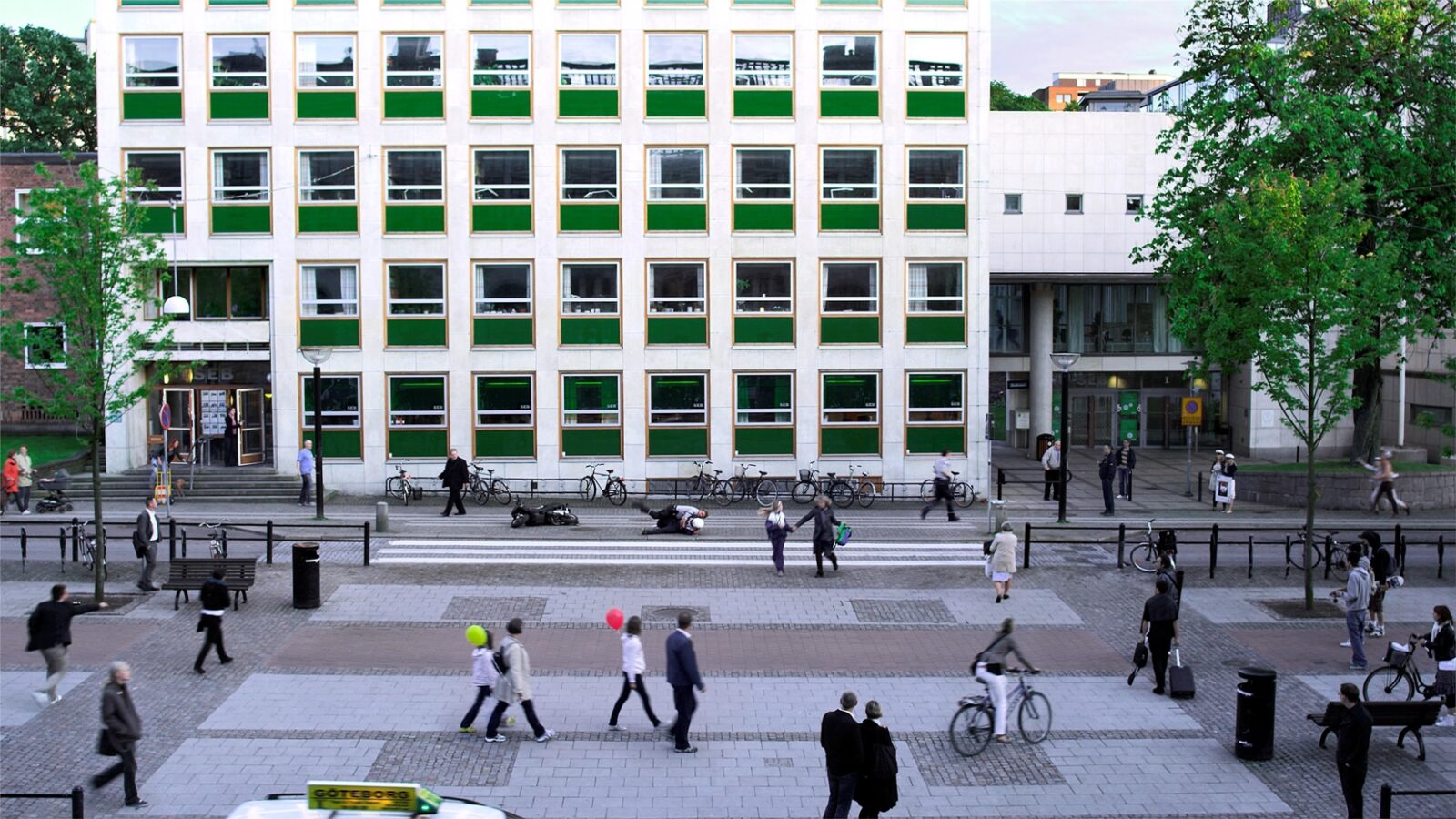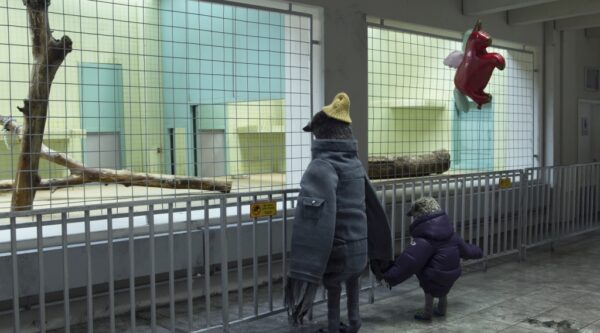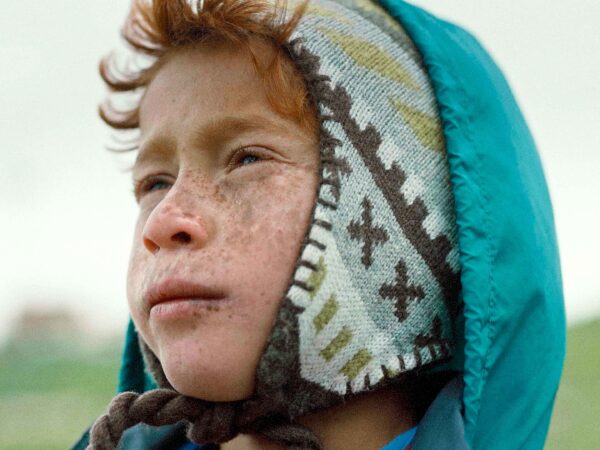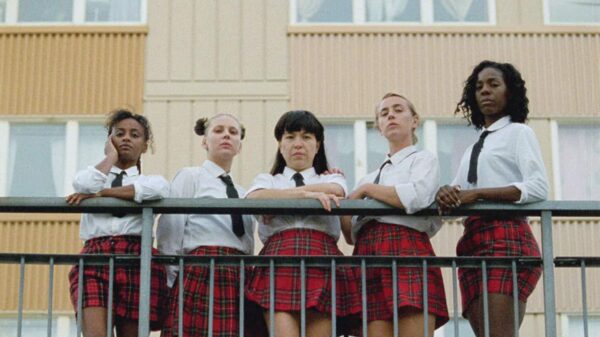Oriented Disorientation
Incident by a Bank
Another look at Ruben Östlund’s Golden Bear-winning short film from 2010.

Looking back at films with the critical eye of the present is usually, somehow, a fascinating exercise. Some films tend to dissolve as years pass by, while others gain their momentum only through the passing of time. Time enables them to find their right place and space, to open up their meaning(s), and to disclose their most hidden layer(s). Speaking in such terms for a work that was appointed the Golden Bear for Best Short Film at the 60th Berlin International Film Festival could sound counterintuitive. Yet, Ruben Östlund’s Incident by a Bank (2009) happened to come to life at the start of the 21st century’s digital shift, in the early stages of a social media revolution that, all of a sudden, turned us into distant observers of a reality that presents itself through the filter of the endless recording cameras surrounding us. Cameras that not merely exist around us, but also exist because of us, as we constantly carry them in our very hands.
Based on a real event, Incident by a Bank is a re-staging of an almost surreal, unsuccessful bank robbery that the filmmaker himself witnessed in Stockholm on June 26, 2006. In front of the camera and throughout a single long take of around ten minutes, over ninety-six performers carefully re-enact this singular event in all its absurdity. Similar to his approach in Involuntary (2008), Play (2011), and Triangle of Sadness (2022), Östlund’s interest is to subtly investigate and highlight how humans, both as individuals and as a group, behave in specific un/usual circumstances. What is peculiar about this short film is, however, how this observational interest is translated into cinematic language. Where and how the filmmaker puts the audience in place, in relation to the action happening on screen, is what makes this film stand out.
In Incident by a Bank, the visual aesthetics of the frame mimic that of a surveillance camera, under whose eye the situation unfolds in real-time. From the camera zooming in, panning from left to right, to then moving back to the left again, there is a constant mechanical re-framing that steadily reorients our perceptual field. Yet, this scanning from one situation to the other, from one character to another, is only superficially there to direct us. Rather, as the scene moves forward, a destabilising sense of disorientation takes over the sequence, and its experience. By always keeping the spectator at a sterile distance from the actual action and by denying any access to the inside of the buildings, Östlund slowly switches the focus from the attempted robbery to the act of being a safe distant witness of the situation in full farcical progression. What matters is not if any money has been stolen or a victim made but the passivity embodied by every character that, like the audience, is left hanging and gazing outside the walls. With the only exception of an old man who turns down the thieves’ scooter, no one even makes the effort to call the police. Rather, everyone stares incredulously at the situation and then passes by it.
As an audience, we are caught off guard by this surreal lack of reactions and interactions by the characters, which, however, is not due to a lack of interest. This inert collective staring doesn’t lack a desire to witness but rather to intervene. As the scene unfolds, an uncrossable barrier between the action and those who observe it is put up—a distancing wall that Östlund’s filmic approach problematizes rather than hides. As every character on screen remains almost still, watching what is available in front of them, the event is slowly turned into a commodity that is there to be passively consumed.
In the unfolding of this realistic, yet absurd, portrayal of two goofy thieves, the camera ceases to serve as a mere objective recording tool and transforms itself into the true protagonist of the film, denying any sort of access to the most hectic side of the scene and simultaneously acting as a testimony of the apathy outside. Even when one of the two thieves is caught by the police, we are suddenly re-oriented, both aurally and visually, toward the conversation between two characters (the filmmaker impersonating Östlund and his friend) as they leave the scene. In all its meta-cinematic nature, their conversation perfectly summarises the essence of this work. A film that encapsulates the core of what the bystander effect is, and questions the act of distant witnessing in an age of full portability and accessibility.
Only when we, the spectator, become absorbed not in the (lack of) action per se, but in the camera’s ability to direct our experience of witnessing the same (lack of) action from afar, Incident by a Bank opens itself up to a whole new layer of meanings. The methodical camera eye ingeniously makes this cynical and subtle satire possible. Through the provided point-of-view, this short film is able to both capture and unveil the apathetic claustrophobia that is inherent to a society in which everything can be recorded, screened and witnessed from an aseptic distance. So absorbed in the possibility of capturing and of watching and rewatching, we not only lose connection with what is happening around us but also lose the will to take action. In the safety of the exterior, we have become desensitised from the actual event.
As the role of the witness, as well as the act of witnessing itself, are uncompromisingly put into question, what are the implications of this desensitisation that almost permeates our contemporary digital and media-saturated society? As in the majority of his oeuvre, Östlund provides no answer. In the end, his look, as well as that of his camera, is no more than the gaze of an observer whose aim remains that of disorienting and destabilising a widespread way of thinking and behaving that, although constitutional to our daily experience, still remains invisible.




There are no comments yet, be the first!